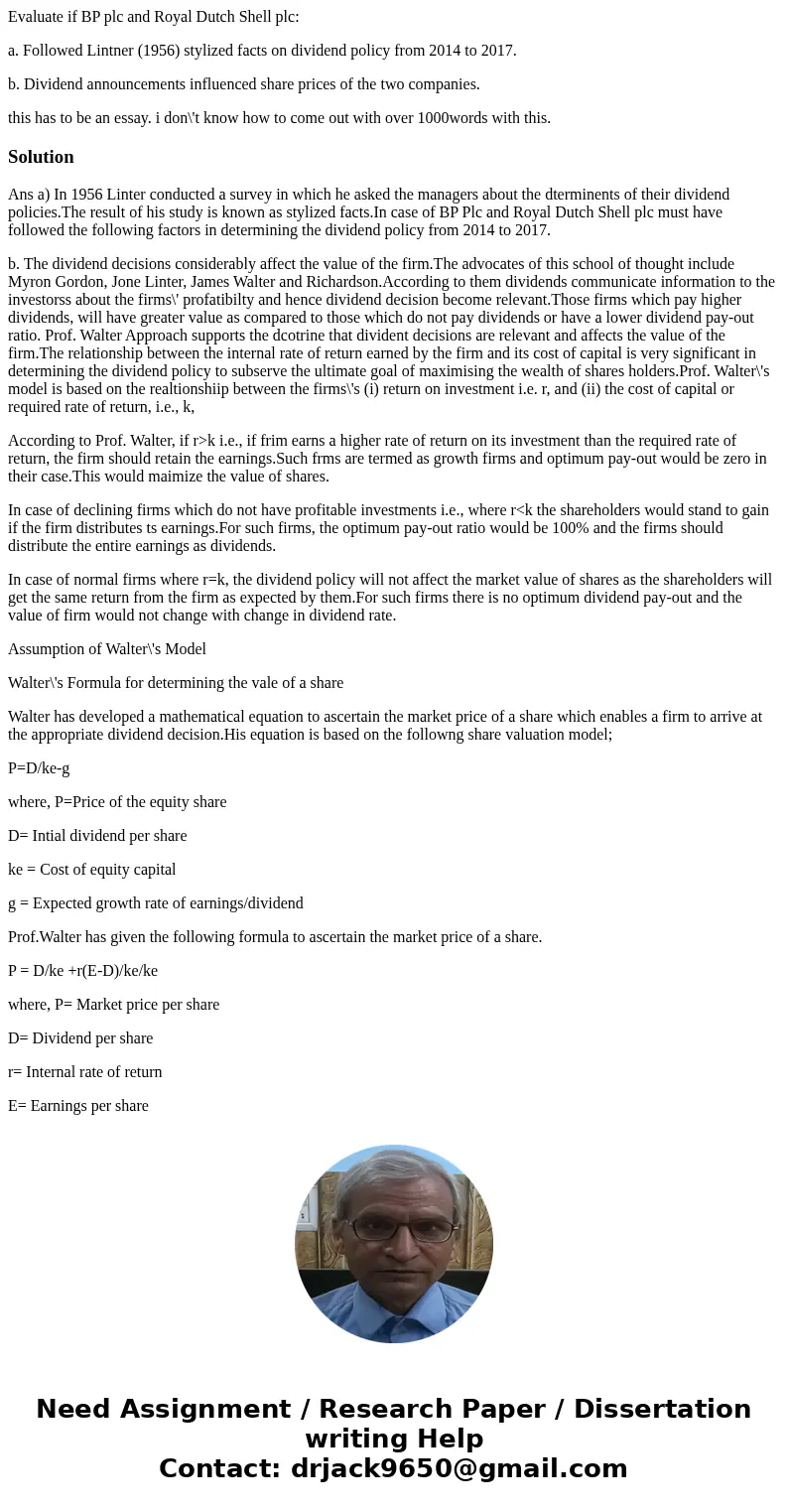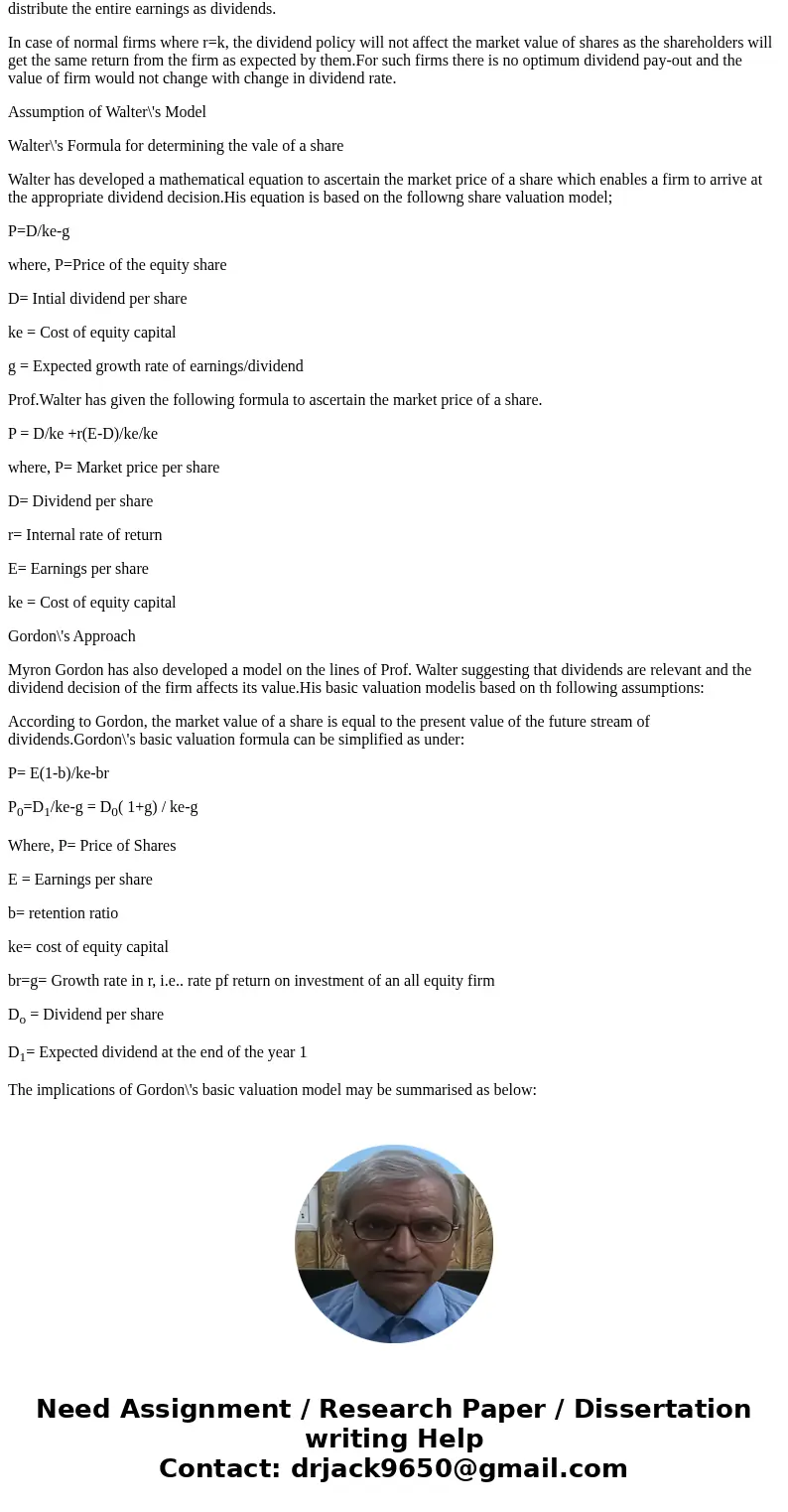Evaluate if BP plc and Royal Dutch Shell plc a Followed Lint
Evaluate if BP plc and Royal Dutch Shell plc:
a. Followed Lintner (1956) stylized facts on dividend policy from 2014 to 2017.
b. Dividend announcements influenced share prices of the two companies.
this has to be an essay. i don\'t know how to come out with over 1000words with this.
Solution
Ans a) In 1956 Linter conducted a survey in which he asked the managers about the dterminents of their dividend policies.The result of his study is known as stylized facts.In case of BP Plc and Royal Dutch Shell plc must have followed the following factors in determining the dividend policy from 2014 to 2017.
b. The dividend decisions considerably affect the value of the firm.The advocates of this school of thought include Myron Gordon, Jone Linter, James Walter and Richardson.According to them dividends communicate information to the investorss about the firms\' profatibilty and hence dividend decision become relevant.Those firms which pay higher dividends, will have greater value as compared to those which do not pay dividends or have a lower dividend pay-out ratio. Prof. Walter Approach supports the dcotrine that divident decisions are relevant and affects the value of the firm.The relationship between the internal rate of return earned by the firm and its cost of capital is very significant in determining the dividend policy to subserve the ultimate goal of maximising the wealth of shares holders.Prof. Walter\'s model is based on the realtionshiip between the firms\'s (i) return on investment i.e. r, and (ii) the cost of capital or required rate of return, i.e., k,
According to Prof. Walter, if r>k i.e., if frim earns a higher rate of return on its investment than the required rate of return, the firm should retain the earnings.Such frms are termed as growth firms and optimum pay-out would be zero in their case.This would maimize the value of shares.
In case of declining firms which do not have profitable investments i.e., where r<k the shareholders would stand to gain if the firm distributes ts earnings.For such firms, the optimum pay-out ratio would be 100% and the firms should distribute the entire earnings as dividends.
In case of normal firms where r=k, the dividend policy will not affect the market value of shares as the shareholders will get the same return from the firm as expected by them.For such firms there is no optimum dividend pay-out and the value of firm would not change with change in dividend rate.
Assumption of Walter\'s Model
Walter\'s Formula for determining the vale of a share
Walter has developed a mathematical equation to ascertain the market price of a share which enables a firm to arrive at the appropriate dividend decision.His equation is based on the followng share valuation model;
P=D/ke-g
where, P=Price of the equity share
D= Intial dividend per share
ke = Cost of equity capital
g = Expected growth rate of earnings/dividend
Prof.Walter has given the following formula to ascertain the market price of a share.
P = D/ke +r(E-D)/ke/ke
where, P= Market price per share
D= Dividend per share
r= Internal rate of return
E= Earnings per share
ke = Cost of equity capital
Gordon\'s Approach
Myron Gordon has also developed a model on the lines of Prof. Walter suggesting that dividends are relevant and the dividend decision of the firm affects its value.His basic valuation modelis based on th following assumptions:
According to Gordon, the market value of a share is equal to the present value of the future stream of dividends.Gordon\'s basic valuation formula can be simplified as under:
P= E(1-b)/ke-br
P0=D1/ke-g = D0( 1+g) / ke-g
Where, P= Price of Shares
E = Earnings per share
b= retention ratio
ke= cost of equity capital
br=g= Growth rate in r, i.e.. rate pf return on investment of an all equity firm
Do = Dividend per share
D1= Expected dividend at the end of the year 1
The implications of Gordon\'s basic valuation model may be summarised as below:


 Homework Sourse
Homework Sourse